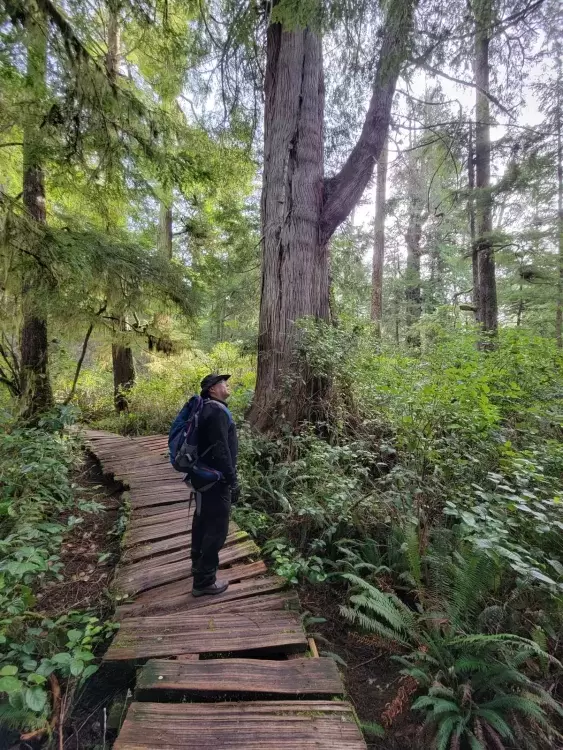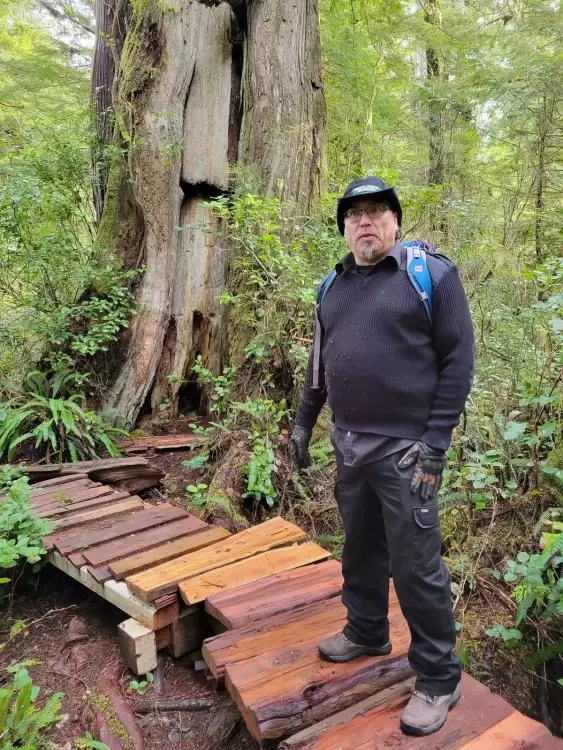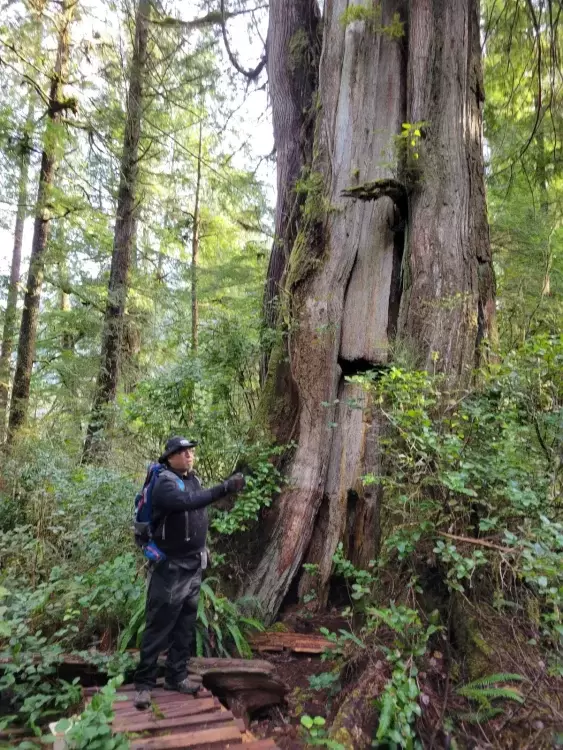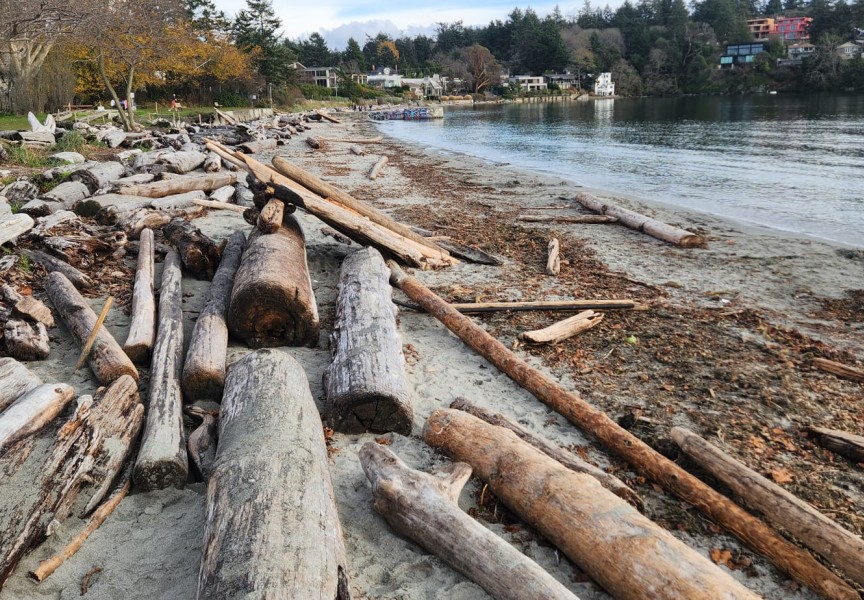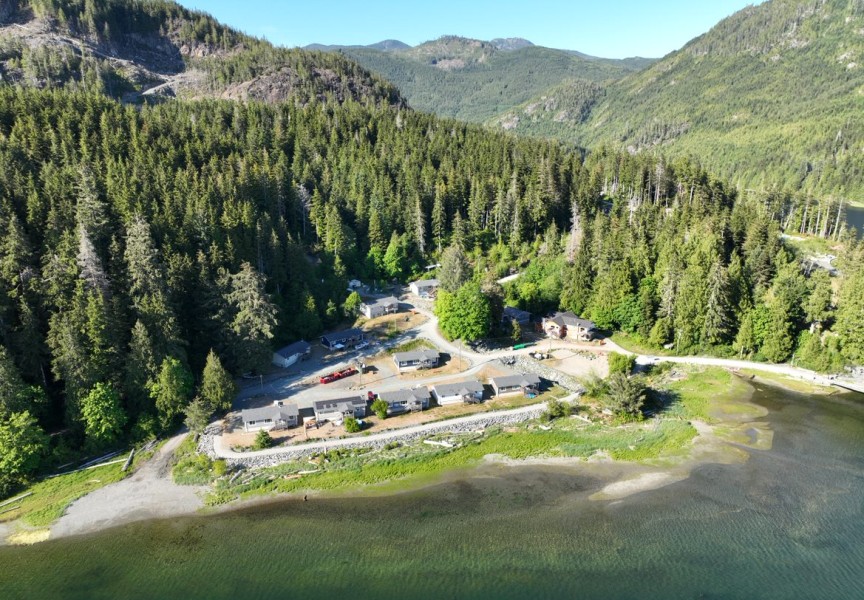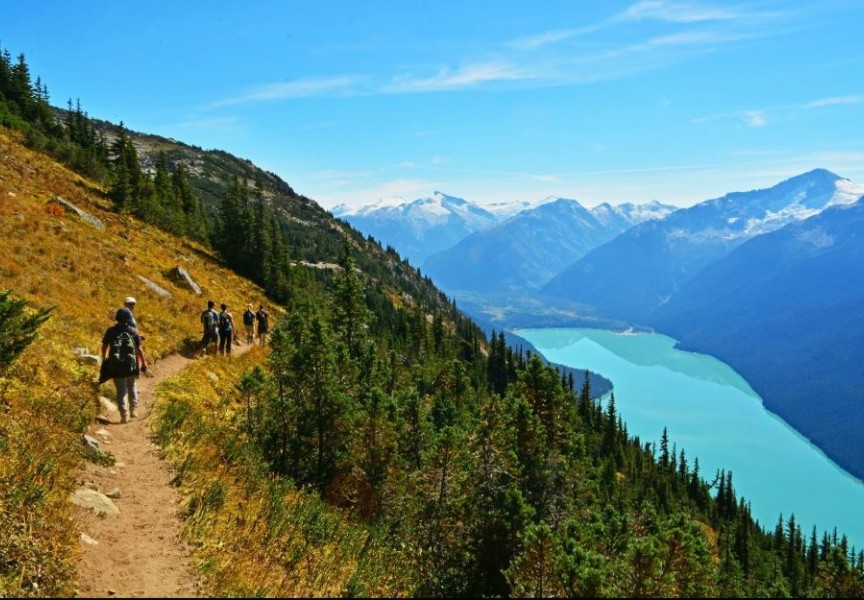In 2008, when the Tla-o-qui-aht Tribal Parks Guardianship Program took over the maintenance of the Meares Island Big Tree Trail, they had lots of work to do.
Saya Masso, lands director for the Tla-o-qui-aht Tribal Parks Guardian Program, has been a guardian since 2008 when the positions were first inaugurated to help implement the land vision outlined in the Tribal Park Declaration.
In 1984 Meares Island was declared a Tribal Park as a means to protect the Island from old growth logging. Since then, three more parks have now been declared, encompassing the entirety of Tla-o-qui-aht territory.
When boats would arrive at the trailhead on Meares Island, there was no dock. They would have to land near the rocks and people would climb off the bow of the boat, explained Masso.
Additionally, the trail, originally built from the ‘84 protests, was rotting.
Since then, the Tribal Parks Guardians have been working for roughly 10 summers to rebuild and maintain the Big Tree Trail on Meares Island including the addition of a dock.
It was built from split board cedar from fallen trees, and spruce, pine or fir stringers from construction sites, explained Masso.
“It was such a win when we finally got every board on the trail replaced,” he said.
The Big Tree Trail had carved its way through the serene forest, originally with the destination called the Hanging Garden Tree, said Masso. The Hanging Garden Tree is a group of four trees growing together with a variety of medicinal plants on them, he continued.
Though this tree is still visible from the trail, due to safety measures the guardian team disassembled the path and rebuilt the trail farther away, directing visitors to a culturally modified red cedar tree. This extension of the trail was done by the Tribal Parks Guardian team in the most recent years, Masso explained.
At the end of the trail, stands a culturally modified red cedar tree that Masso predicts was harvested roughly 100 to 150 years ago. The way Tla-o-qui-aht traditionally harvests cedar allows the tree to continue its life and maintains the forest canopy.
Masso said that this tree would have been used for longhouse boards.
Moses Martin, who served for years as a former elected chief, explains that when in court with the province or Canada the Tla-o-qui-aht always had to provide proof of continued occupation.
After conducting research, they found that there are roughly 72,000 culturally modified trees on Meares Island within one hundred meters from the shoreline, he said.
“That indicates the use of cedar bark and planks… for housing and also for canoe making,” said Martin. “All those kinds of things that played into our need to protect the island for continued use.”
Among the base of the old growth forest, Masso and his team laid bark mulch to retain moisture and protect the roots of the trees.
“Without boardwalk, the whole trail would be littered with roots that you're tripping over,” said Masso. “Even before we lay boardwalk, we often bark mulch it, fix it, and then build a boardwalk over it.”
With particular trees around the trail they intend to build platforms over the roots for guide operators and visitors so that these essential parts remain protected.
“Part of our goal of protecting old growth forests is for the immense biodiversity that's in there, and its resilience to climate change,” said Masso.
“A fully intact old growth forest, the sunlight comes in [and] there’s such a mix of age class of trees. A second growth [forest], every tree is all the same age and so it gets really dark,” he added.
According to a report conducted in 2018, Tofino saw 600,000 annual visitors, contributing $295 million to the local economy.
The Tribal Park Allies program, launched in 2018, includes businesses and organizations throughout the community who support Tla-o-qui-aht in their vision.
Allies agree to collect a one per cent ecosystem service fee, which is ultimately reinvested into community efforts such as restoring salmon-bearing streams, community programs, and building a longhouse.
Masso said that there are over 100 businesses in the area that have signed up as Tribal Park allies.
“We're very aware of the impacts of tourism, and we want to be benefiting from it, and help mitigate the impacts of it through our guardian programs,” said Masso. “We want the million people that come here to know who Tla-o-qui-aht is.”
Masso explains that a “symptom of over tourism via lack of affordable housing” is illegal backcountry campers in the Ha`uukmin (Kennedy Lake Watershed) Tribal Park, who leave refuse behind. The guardian program now monitors this area, and as a result have seen less refuse.
When asked about regenerative tourism, Masso said, “reciprocal relationships are important, reciprocity, [and] giving back for what is taken.”
“Right now, without our relationship to tourism, in a large formal sense it's abrasive to us,” said Masso. “These are the types of jobs that make you feel that tourism is on the right path.”
“It's a work of love,” he continued, reflecting on the Big Tree Trail on Meares Island. “I look in the future, and if our grandchildren have jobs replacing boards on this trail, I'm more than happy about that.”

